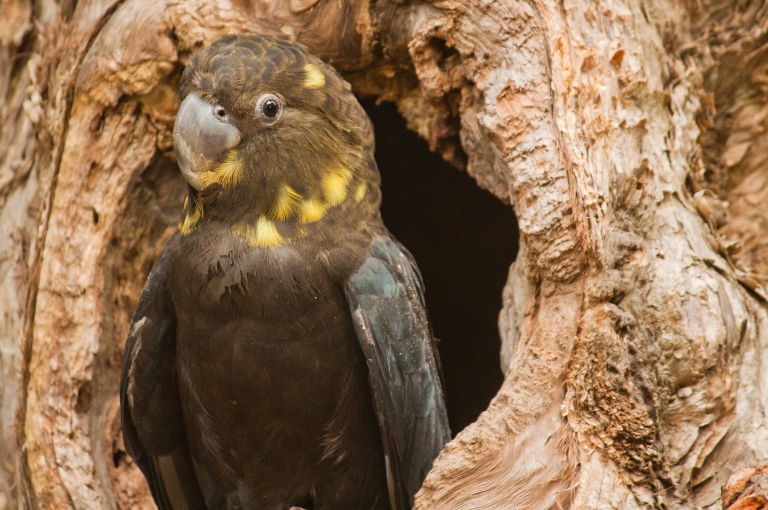
Local communities across south-eastern Australia are combining efforts in projects to assist and expand populations of spotted-tailed quolls, glossy black cockatoos and dozens of other wildlife species still recovering from the Black Summer bushfires.
Glideways, Flyways and Stepping Stones, a partnership between the Great Eastern Ranges (GER) and WIRES, is supporting Landcare and community groups to roll-out post-fire recovery activities with landholders in the Greater Blue Mountains, Bega Valley and Middle Clarence.
“In many areas, the Black Summer bushfires are still front and centre of mind for local communities and populations of wildlife are struggling to rebound three years on,” says Gary Howling, CEO of Great Eastern Ranges.
“Our partnership with WIRES is bringing people together in some of NSW’s hardest hit landscapes to support projects that boost wildlife populations, protect and reconnect vital habitats, manage threats, and build community and landscape resilience to future climate disasters.”
Over the next year, the partnership will establish over 35,000 plants, improve habitat connections across 12,000 hectares and engage hundreds of locals in on-ground activities, citizen science surveys and private land conservation.
“All the projects are community-led so that they meet the needs of the local landholders, landscape and wildlife, and complement existing on-ground efforts. All of these activities combined create impact at the large scale needed,” says Gary.
In the Greater Blue Mountains, where more than 60% of the area was affected by the 2019-2020 bushfires, local Landcare groups are hosting a community forum on 6 May to engage landholders in on-ground efforts to improve, expand and protect habitat, install nest boxes and survey wildlife.
“Three years on from the bushfires, native bushland is regenerating well in some areas, but weeds and the loss of hollow-bearing trees are hampering recovery, and little is known about how local wildlife is faring.”
“Our citizen scientist led surveys will help to fill this knowledge gap so that we have a better understanding of how populations of local wildlife are doing and inform our on-ground restoration efforts to support them,” says Katherine Clare, Local Landcare Coordinator for Hawkesbury-Nepean Landcare Network.
WIRES Chief Operating Officer Kyla Shelley said through combining their efforts, WIRES, GER and Landcare can achieve a much greater reach and assist the many native animal species still rebounding from the bushfires and floods.
“Increased collaboration between landowners, environmental groups, communities and governments is essential to deliver the landscape scale habitat improvements needed to conserve wildlife. These projects are critical to improving the quality and quantity of available habitat in key locations to rebuild and grow wildlife populations.” said WIRES Chief Operating Officer, Kyla Shelley.



 Media release
Media release